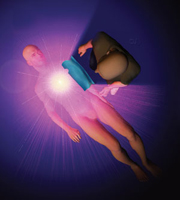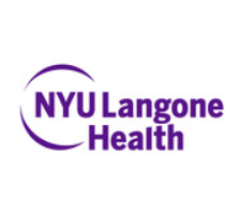
The Society for Cardiovascular Angiography and Interventions (SCAI) this week published guiding principles and best practices for the development of radiation safety programs in cardiac catheterization laboratories. The paper, titled “Radiation Safety Program for the Cardiac Catheterization Laboratory,” was published in the current issue of Catheterization and Cardiovascular Interventions (CCI).
It focuses on the need for safe practice and continuing education for all facilities that perform cardiac procedures involving the use of radiation for imaging. This first-of-its-kind document offers a summary of program development criteria, including procedural guidelines, appropriate training and education, dose management and monitoring, equipment considerations and potential safety concerns.
Since SCAI’s 1992 publication of “Guidelines for Radiation Safety in the Cardiac Catheterization Laboratory,” the average procedural radiation dose has increased due to more complex percutaneous coronary interventions (PCI) and electrophysiology procedures, emphasizing the need for a radiation safety program for all catheterization laboratories. This paper provides institutions and practitioners with a set of program development guidelines designed to ensure hospital staff and patients are aware of radiation exposure risks and are provided with the most current guidelines, tools and knowledge for best practice in radiation dose management. The paper also provides guidance to physicians and patients if significant radiation dose is delivered during complex cases when the benefit of continuing the case is greater than the potential risk from radiation.
“As procedures and technologies improve and enhance patient care, the need increases for education on safe radiation practice to protect our patients and ourselves,” said Charles Chambers, M.D., FSCAI, director of the cardiac catheterization laboratory at Penn State Hershey Medical Center, Hershey, Pa., and primary author of the paper. “In procedures that involve radiation, unnecessary exposure can sometimes lead to other unintended health concerns. This paper should be viewed as a valuable resource to help ensure institutions and practitioners have the knowledge and education programs in place to maintain a safe radiation dose in the catheterization lab.”
The paper recommends radiation education programs contain a series of didactic online or standard classroom lectures where staff can increase their knowledge about a variety of topics and techniques related to cardiac catheterization procedures, including technology, proper dose management, biological effects of radiation, regulations and requirements, and techniques to minimize dose and exposure.
The paper also addresses multiple system components necessary for a comprehensive education program, including:
• The designation of a specific radiation safety person to coordinate education and radiation safety issues and to work with the medical or health physicist
• Personal dose monitors to measure staff radiation dose and maintenance of lifelong radiation exposure records
• The use of protective garments worn by all personnel in the procedure room when the X-ray beam is on and access to radiation-specific eye protection
• The purchase of quality fluoroscopic imaging equipment to provide greater customization and more effective dose management and the positioning of additional shielding equipment and fixed barriers to provide protection from scattered radiation
The paper also outlines important guidelines for pre-, during and post-procedure dose management, including:
• Pre-procedure assessment of risk and informed consent with radiation information to ensure patients are aware of the risks and benefits and the possibility for additional follow up and treatment
• Management of radiation from the beginning to the end of a procedure in the cardiac catheterization laboratory, including assessing variables and adjusting procedural techniques to ensure minimum radiation dose
• Documentation of post-procedure radiation dose and patient notification, chart documentation and ongoing communication with the primary care provider in cases where the radiation dose exceeded the recommended limit for the procedure, and followup in patients where adverse tissue effect is suspected
“Through the development and publication of this paper, our hope is that institutions and clinical staff will be even more aware of the safety implications associated with cardiac catheterization procedures involving radiation for a collaborative effort in continuous quality improvement in our cath labs,” said Larry S. Dean, M.D., FSCAI, SCAI president, director of the UW Medicine Regional Heart Center and professor of medicine and surgery at the UW School of Medicine. “SCAI urges institutions with cardiac catheterization labs to take a careful look at the education program components and guidelines outlined in this paper to ensure we are consistently providing our patients and ourselves with the safest environment possible for the best possible patient outcomes.”
Specific radiation safety considerations for certain populations of patients undergoing cardiac catheterization are also addressed in this paper, including for pregnant women and patients’ with structural or congenital heart disease. It is recommended that women who are pregnant, or suspect they may be pregnant, avoid conducting or undergoing elective procedures during pregnancy, especially in the first trimester, to avoid possible fetal developmental defects. Congenital and structural transcatheter interventions often have longer procedures times, and pediatric patients tend to undergo multiple diagnostic and therapeutic catheterizations involving radiation. There is potential for a harmful cumulative radiation dose in pediatric patients, and physicians must be actively involved in monitoring patient dose and ensure proper equipment and technique is used for minimal radiation dose.
To view the paper it its entirety, go to http://onlinelibrary.wiley.com/doi/10.1002/ccd.22867/pdf.
For more information: www.scai.org


 August 14, 2025
August 14, 2025 









